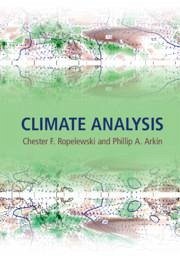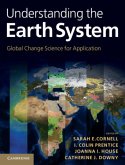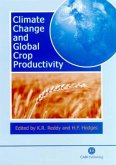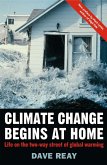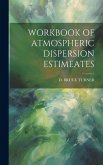- Gebundenes Buch
- Merkliste
- Auf die Merkliste
- Bewerten Bewerten
- Teilen
- Produkt teilen
- Produkterinnerung
- Produkterinnerung
Explains how climatologists have come to understand current climate variability and trends through analysis of observations, datasets and models.
Andere Kunden interessierten sich auch für
![Understanding the Earth System Understanding the Earth System]() Understanding the Earth System72,99 €
Understanding the Earth System72,99 €![Handbook of Climate Change and Agroecosystems: Global and Regional Aspects and Implications - Joint Publication with the American Society of Agronomy, Crop Science Society of America, and Soil Science Society of America Handbook of Climate Change and Agroecosystems: Global and Regional Aspects and Implications - Joint Publication with the American Society of Agronomy, Crop Science Society of America, and Soil Science Society of America]() Handbook of Climate Change and Agroecosystems: Global and Regional Aspects and Implications - Joint Publication with the American Society of Agronomy, Crop Science Society of America, and Soil Science Society of America106,99 €
Handbook of Climate Change and Agroecosystems: Global and Regional Aspects and Implications - Joint Publication with the American Society of Agronomy, Crop Science Society of America, and Soil Science Society of America106,99 €![Climate Change and Global Crop Productivity Climate Change and Global Crop Productivity]() K ReddyClimate Change and Global Crop Productivity248,99 €
K ReddyClimate Change and Global Crop Productivity248,99 €![When the Ice Is Gone When the Ice Is Gone]() Paul BiermanWhen the Ice Is Gone20,99 €
Paul BiermanWhen the Ice Is Gone20,99 €![Climate Change Begins at Home Climate Change Begins at Home]() Dave ReayClimate Change Begins at Home22,99 €
Dave ReayClimate Change Begins at Home22,99 €![The Climatic Factor as Illustrated in Arid America The Climatic Factor as Illustrated in Arid America]() Ellsworth HuntingtonThe Climatic Factor as Illustrated in Arid America34,99 €
Ellsworth HuntingtonThe Climatic Factor as Illustrated in Arid America34,99 €![Workbook of Atmospheric Dispersion Estimeates Workbook of Atmospheric Dispersion Estimeates]() D Bruce TurnerWorkbook of Atmospheric Dispersion Estimeates28,99 €
D Bruce TurnerWorkbook of Atmospheric Dispersion Estimeates28,99 €-
-
-
Explains how climatologists have come to understand current climate variability and trends through analysis of observations, datasets and models.
Produktdetails
- Produktdetails
- Verlag: Cambridge University Press
- Seitenzahl: 362
- Erscheinungstermin: 17. Januar 2019
- Englisch
- Abmessung: 254mm x 180mm x 25mm
- Gewicht: 934g
- ISBN-13: 9780521896160
- ISBN-10: 0521896169
- Artikelnr.: 53216147
- Herstellerkennzeichnung
- Libri GmbH
- Europaallee 1
- 36244 Bad Hersfeld
- gpsr@libri.de
- Verlag: Cambridge University Press
- Seitenzahl: 362
- Erscheinungstermin: 17. Januar 2019
- Englisch
- Abmessung: 254mm x 180mm x 25mm
- Gewicht: 934g
- ISBN-13: 9780521896160
- ISBN-10: 0521896169
- Artikelnr.: 53216147
- Herstellerkennzeichnung
- Libri GmbH
- Europaallee 1
- 36244 Bad Hersfeld
- gpsr@libri.de
Chester F. Ropelewski has fifty years of experience in climate analysis, including weather forecasting, development of climate datasets and real-time monitoring systems, research in atmospheric turbulence, tropical boundary layers, hurricanes, the North American monsoon, sea ice, snow cover, climate variability, El Niño/Southern Oscillation (ENSO), Quasi-Biennial Oscillation, hydrologic cycle, and droughts. He was awarded the Norbert Gerbier-Mumm Award from the World Meteorological Organization in 1990, and elected a Fellow of the American Meteorological Society in 2001. He is the author of over 100 research papers, book chapters and reports. He was Chief of the Analysis Branch of the Climate Prediction Center of the National Oceanic and Atmospheric Administration (NOAA); Director of the Climate Monitoring section of the International Research Institute for Climate and Society at Columbia University; and a Senior Policy Analyst and Advisor of The Earth Institute, Columbia University.
Foreword Antonio J. Busalacchi, Jr
Preface
List of abbreviations and acronyms
1. Earth's climate system
2. Climate analysis: goals and methods
3. Climate analysis: atmospheric instruments, observations, and datasets
4. Climate variability
5. Climate change
6. Temperature: building climate datasets
7. Precipitation: combining in-situ and remotely-sensed observations in constructing climate datasets
8. Ocean climate datasets
9. Cryosphere
10. Land component of the climate system
11. Climate models as information sources and analysis tools
12. Operational climate monitoring and prediction
Appendix A. A short guide to some statistics used in climate analysis
Appendix B. Vorticity/divergence, stream function/velocity potential
Appendix C. Preliminary examination of the data
Appendix D. Components of the mean water budget
Glossary
References
Index.
Preface
List of abbreviations and acronyms
1. Earth's climate system
2. Climate analysis: goals and methods
3. Climate analysis: atmospheric instruments, observations, and datasets
4. Climate variability
5. Climate change
6. Temperature: building climate datasets
7. Precipitation: combining in-situ and remotely-sensed observations in constructing climate datasets
8. Ocean climate datasets
9. Cryosphere
10. Land component of the climate system
11. Climate models as information sources and analysis tools
12. Operational climate monitoring and prediction
Appendix A. A short guide to some statistics used in climate analysis
Appendix B. Vorticity/divergence, stream function/velocity potential
Appendix C. Preliminary examination of the data
Appendix D. Components of the mean water budget
Glossary
References
Index.
Foreword Antonio J. Busalacchi, Jr
Preface
List of abbreviations and acronyms
1. Earth's climate system
2. Climate analysis: goals and methods
3. Climate analysis: atmospheric instruments, observations, and datasets
4. Climate variability
5. Climate change
6. Temperature: building climate datasets
7. Precipitation: combining in-situ and remotely-sensed observations in constructing climate datasets
8. Ocean climate datasets
9. Cryosphere
10. Land component of the climate system
11. Climate models as information sources and analysis tools
12. Operational climate monitoring and prediction
Appendix A. A short guide to some statistics used in climate analysis
Appendix B. Vorticity/divergence, stream function/velocity potential
Appendix C. Preliminary examination of the data
Appendix D. Components of the mean water budget
Glossary
References
Index.
Preface
List of abbreviations and acronyms
1. Earth's climate system
2. Climate analysis: goals and methods
3. Climate analysis: atmospheric instruments, observations, and datasets
4. Climate variability
5. Climate change
6. Temperature: building climate datasets
7. Precipitation: combining in-situ and remotely-sensed observations in constructing climate datasets
8. Ocean climate datasets
9. Cryosphere
10. Land component of the climate system
11. Climate models as information sources and analysis tools
12. Operational climate monitoring and prediction
Appendix A. A short guide to some statistics used in climate analysis
Appendix B. Vorticity/divergence, stream function/velocity potential
Appendix C. Preliminary examination of the data
Appendix D. Components of the mean water budget
Glossary
References
Index.

